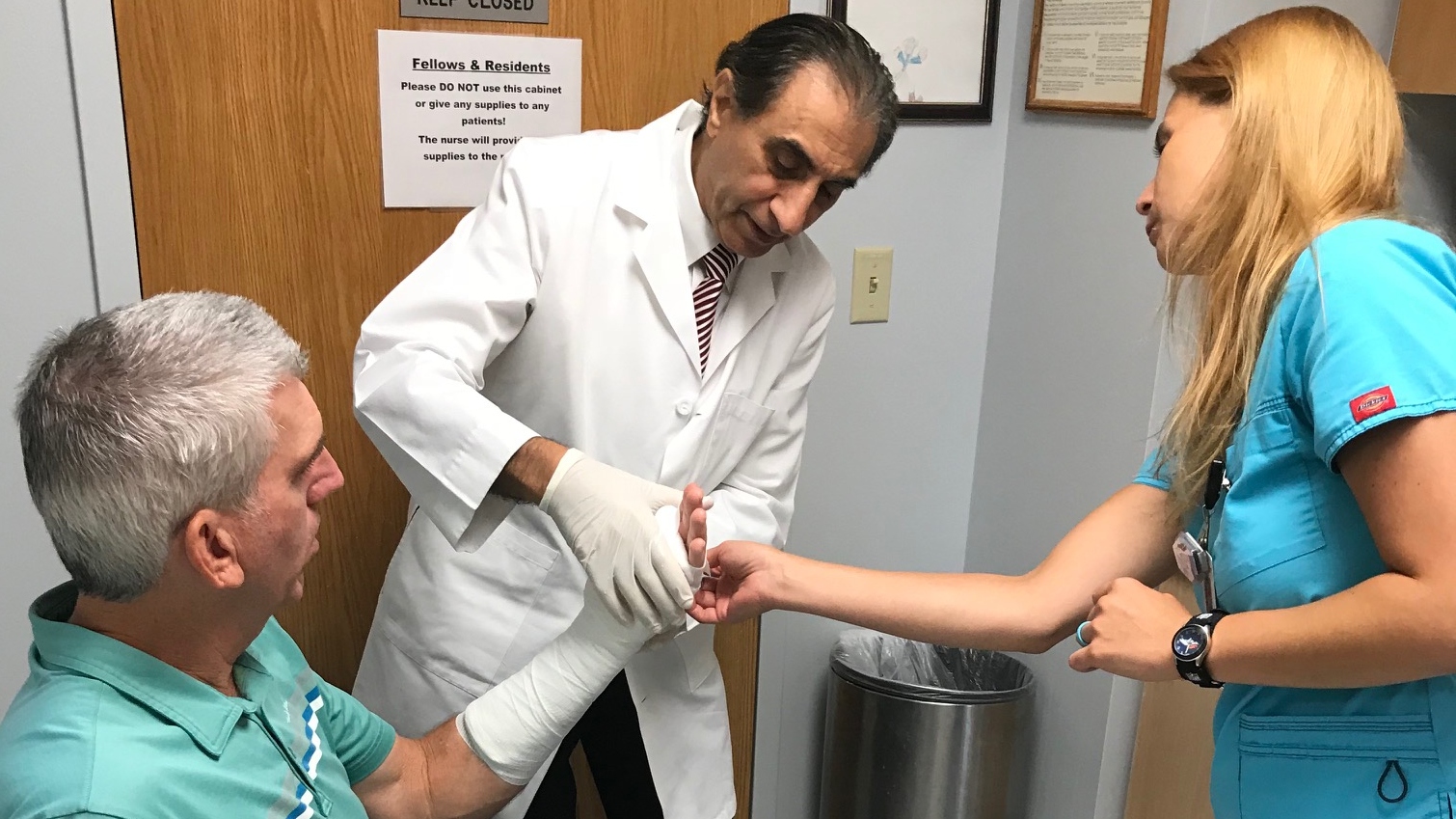A Day in the Life of a Hand Surgeon

Hand surgery may not be the first thing that comes to mind when you think about life-changing procedures, but the INTEGRIS Hand and Microsurgery Center gives a second chance to people whose hands have become impaired due to injury or disease.
Our hands are tools that help us interact with the world around us. We use them to earn our living and take care of our families and ourselves. When we can’t rely on our hands, our lives are affected in many ways.
In fact, the hand is a body part predisposed to trauma because, like the face, its surface is exposed. Additionally, because the hand has such unique qualities, like the existence of sensation and the ability to perform many precise and delicate motions, hands are not only critical for everyday life, they are a true extension of the human brain. Hands allow us to express emotion, provide comfort and act independently.
So, what does an INTEGRIS hand surgeon do? Dr. Ghazi Rayan is an orthopedic and fellowship-trained hand surgeon, director of the INTEGRIS Hand and Microsurgery Center and director of the Oklahoma Hand Fellowship Program. We asked Dr. Rayan a few questions about his interesting career to get a glimpse of a day in the life of a hand surgeon.
What are the most common surgical procedures you perform?
I provide a full spectrum of hand and upper extremity surgeries for acute injuries, reconstruction after trauma and chronic diseases.
In children - I perform a myriad of reconstructive surgical procedures for many congenital hand and upper extremity anomalies including cerebral palsy.
In adults – The most common procedures include reconstruction of the arthritic hand and wrist, nerve decompression at all levels from the neck to the hand, excision of tumors and correction of Dupuytren’s disease (a gradual thickening and tightening of tissue under the skin in the hand).
What injuries and conditions do you typically see in patients?
Acute injuries – I treat a variety of them. These include fractures, dislocations, skin defects, ligament injuries and instability, tendon lacerations, and peripheral nerve and vessel injuries. These injuries may require post-traumatic reconstruction and management of something called “fracture nonunion" which happens when a broken bone fails to heal.
Non-traumatic conditions - I also treat a variety of chronic conditions including:
- Carpal tunnel, cubital tunnel and thoracic outlet syndromes, which are all compression neuropathies
- Arthritic conditions such as osteoarthritis and rheumatoid arthritis
- Tumors such as benign ganglion cysts, inclusion cysts and malignant tumors
- Paralyzed hands due to cerebral palsy and quadriplegia
- Congenital disorders of the hand and upper extremity
- Tendinitis such as tennis elbow or lateral epicondylitis
- De Quervain’s disease (trigger finger)
- Dupuytren’s disease
How many appointments and surgeries do you have per week?
On average, I see 50 patients per week in clinic appointments. It is important to spend substantial time with patients examining and diagnosing them and then explaining their condition and the details of their surgery and recovery. Therefore, my practice is purposefully not as high volume as, say, a family physician.
Surgeries vary from four to eight cases each week depending on the complexity of the case. Complicated cases may take all morning, whereas four simple procedures can be performed in half a day.
What does your daily routine look like?
At 6:30 a.m., I am either attending a conference, giving a lecture or will be in the surgery unit preparing a patient for surgery. Between 7 a.m. and noon, I perform surgery. Starting at 12:30 p.m., I see patients in the clinic. After that, I attend conferences or work on journal articles or book chapters for various textbooks.
Are there parts of your job that might surprise readers?
I am director of the only Hand Surgery Fellowship Program in Oklahoma. The program is an ACGME accredited program approved for two outstanding fellows each year after they have completed their orthopedic and plastic surgery training. This combined university/private institution fellowship provides balanced, diverse and in-depth hand surgery education on a wide variety of hand pathologies.
Also, I dedicate a great deal of my time to teaching, researching with my fellows and medical writing. I have published more than 190 articles in peer-reviewed journals, written 31 book chapters and edited eight books.
I am the past president of my surgical organization and still volunteer a substantial amount of time to its governance. It is called the American Society for Surgery of the Hand, has 4,000 members and is the oldest and most prestigious surgical specialty society in the world.
It also might surprise readers that I treat patients with very complicated problems that other surgeons might not treat, such as numerous congenital hand and upper extremity problems, brachial plexus birth injuries, cerebral palsy, thoracic outlet syndrome and revision of complicated failed surgeries or neglected injuries.
What healthy habits have you adopted to take care of your own hands?
I exercise regularly, eat healthy and love to read all kinds of books. To protect my hands, I always wear protective gloves if I work outside and I do not use power tools, such as a lawnmower or skill saw. I leave those jobs for the professionals because I’ve seen many unforgettable injuries in more than a quarter century of hand surgery experience.


